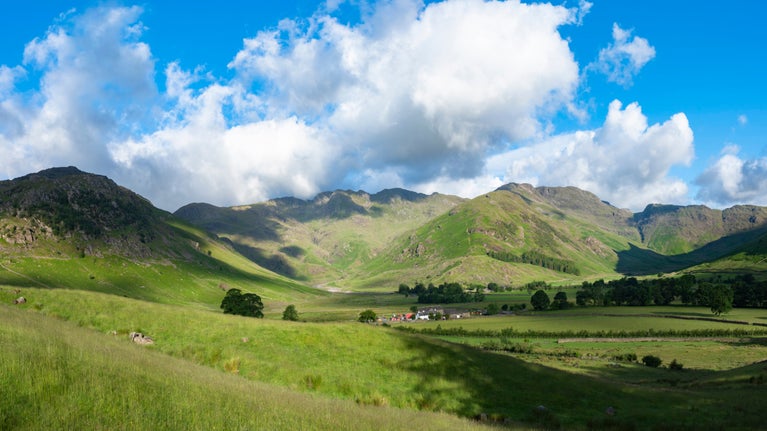
Nature conservation
From ancient trees to bees and butterflies, our places are full of life. We're working hard to safeguard nature for years to come.

The Hinton Ampner: Reimagining a Hampshire Estate project will help nature here to recover and thrive, increasing the diversity of plants and animals by providing a variety of wildlife habitats.
We’ll plant trees and hedges and reclaim chalk grasslands. Sustainable farming practices will improve the health of the soil and water and create wild field borders. And we’ll regularly monitor the state of our wildlife, including certain key species.
Over the years, the variety and size of wildlife habitats at Hinton Ampner has been drastically reduced, partly due to the impact of commercial farming.
Some habitats have shrunk significantly, while others have become fragmented, meaning they may not be large enough to support the species that rely on them.
We’re taking steps to remedy this.
Following the retirement of our tenant farmer, over 280 hectares of land are now back under the management of the National Trust.
While some of this land will be used for sustainable farming – with its own benefits for nature – the rest will be used to restore and create wildlife habitats.
By 2030, we’ll have established 100,000 new trees at Hinton, mostly native species, many grown from seeds harvested from local trees.
As well as creating new areas of woodland and wood pasture, this will join up existing sections of ancient woodland to create more robust habitats.
In the same way, we’ll restore ancient hedgerows, linking them up again so they can support larger, more sustainable populations, giving them more of a chance to survive and grow.
Other areas of reclaimed farmland will be turned back into chalk grassland, providing habitats for a wide range of plants, insects and birds.

In the areas of Hinton we keep as farmland, regenerative farming techniques will make a huge contribution to improving the estate for wildlife.
We’ll restrict the use of chemical fertilisers on the fields and grow plants and crops that will help improve soil structure. When sowing the fields, we'll disturb the soil with as little tilling as possible.
Together, these measures will help prevent the soil from being washed away and harmful chemicals making their way into the land and river.
Farmed fields will have wide borders, left wild to create a rich habitat for birds, butterflies and small mammals.
They'll also have areas dedicated to growing plants that will provide food for birds during the winter.
Meanwhile, small groups of native-breed cattle will be reintroduced to graze the open landscape, ensuring suitable habitats for the widest range of species.

An important part of helping nature to thrive at Hinton is understanding what wildlife is already here and monitoring how this changes.
We’ve now completed an initial survey looking at the different species currently found on the estate and in what numbers.
We’ll carry out further surveys over the coming months and years to track how this changes as new habitats are created and develop.
As part of our wildlife monitoring, we’ll be keeping a particular eye on some target species we’ve identified as good indicators of nature recovery.
Many of these are rare, and some are threatened with extinction in the United Kingdom.
Our 'top 10' – plus a few more – include:
We’re also working in partnership with the Woodmeadow Trust to propagate particular species of ground flowers, which we’ll plant in our new woodlands.

From ancient trees to bees and butterflies, our places are full of life. We're working hard to safeguard nature for years to come.
Everything you need to know about this project to transform the estate into a more vibrant, accessible and sustainable place where people and nature can thrive.
As part of the Reimagining a Hampshire Estate project, we’re switching to regenerative farming methods that improve the soil and reduce the impact on nature and the environment.

Discover how the Reimagining a Hampshire Estate project will give visitors more room to roam and make nature accessible to everyone.

As the Reimagining a Hampshire Estate conservation project unfolds, there will be plenty of opportunities for visitors and the local community to get involved and share their experiences.
